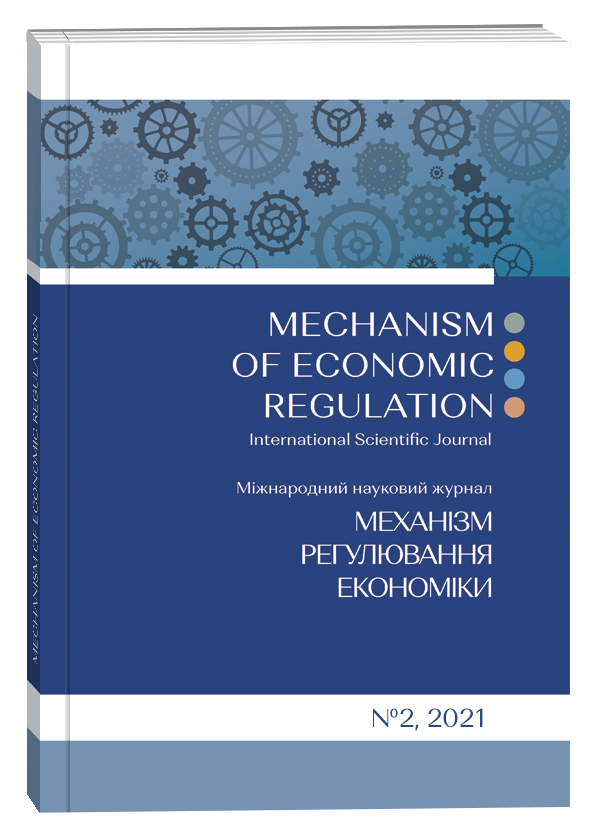CIRCULAR ECONOMY: TENDENCIES AND DEVELOPMENT PERSPECTIVES
Abstract
The research represents the analysis of the circular economy and its essential characteristics of circular economy in the modern world. The circular economy makes it possible to "detach" the country's GDP growth from the consumption of natural resources and environmental pollution. It explains how the circular economy should stimulate sustainable development and inclusion in the system of Sustainable Development Goals. The research presents how the circular economy can ensure labor productivity, efficient environmental and energy conservation, and the creation of new jobs. It analyzes principles and tools of the circular economy. This research shows how economies should move from the current linear take, make, use, dispose practice to reuse and longer product life. It shows how current business models change and what principles are used to develop a circular economy. It examines the circular approaches based on the 3-R principle: Reduce: reduce resource use and prioritize renewable materials; Reuse: make the most of the products; Recycle: recover by-products and waste for further use in the economy. The research shows how seven key tools of the circular economy may be applied. It reveals the international experience in implementing the circular economy principles. The research describes the benefits that the transition to a circular economy brings. It analyses major circular economy barriers, such as financial, social, and technical. The research distinguishes the benefits of a circular economy. They include a decrease in costs, a cleaner and safer environment, sensitive use of natural resources, new job creation, reducing dependence on imports. This research presents the examples of Norrköping Industrial Symbiosis Network in Sweden, Latvia’s circularity business models.
References
Circular economy in Europe (2016). Developing the knowledge base. Report number: EEA report No 2/2016 Affiliation: EEA. January 2016, European Environment Agency. https://doi.org/10.2800/51444
Circular Economy: New rules will make EU the global front-runner in waste management and recycling, European Commission. Press release. (2018). Retrieved from http://europa.eu/rapid/pressrelease_IP-18-3846_en.htm
G20 Finance Ministers and Central Bank Governors stress.... Retrieved from https://www.iasplus.com/en/news/2013/07/g20
Industrial symbiosis in Sweden. Retrieved from http://www.industriellekologi.se/symbiosis/norrkoping.html
Burger, M., Stavropoulos, S., Ramkumar, Sh., Dufourmont, J. & Oort, F. (2019). The heterogeneous skill-base of circular economy employment. Research Policy, 1, 248–261. https://doi.org/10.1016/j.respol.2018.08.015
Sillanpää, M. & Ncibi M. Ch. (2019). The Circular Economy: Case Studies about the Transition from the Linear Economy. Academic Press, 344 p. Retrieved from https://www.researchgate.net/publication/333223330_The_Circular_Economy_Case_Studies_about_the_Transition_from_the_Linear_Economy
Mishenin, Ye. V., & Koblianska, I. I. (2017). Perspectives and mechanisms of "circular" economy global development. Marketing and Management of Innovations, 2, 329–343. https://doi.org/10.21272/mmi.2017.2-31
Prieto-Sandoval, V., Jaca, C. & Ormazabal, M. (2018). Towards a consensus on the circular economy. Journal of cleaner production, 1, 605–615. https://doi.org/10.1016/j.jclepro.2017.12.224
Stefanakis, A. & Nikolaou, I. (2021). Circular Economy and Sustainability. 1st Edition. Volume 1: Management and Policy. Elsevier, 420 p.
Linear vs Circular Economy. (2018). Retrieved from https://www.instarmac.co.uk/linear-vs-circulareconomy/
The Circularity Gap Report. (2019). Retrieved from https://www.legacy.circularity-gap.world/2019
Varfolomieiev, M. O. & Churikanova, O. Yu. (2020). Tsyrkuliarna ekonomika yak nevidiemnyi shliakh ukrainskoho maibutnoho v aspekti hlobalizatsii. [Circular economy as an integral way of Ukraine’s future in the aspects of globalization]. Efektyvna ekonomika – Efficient economy. https://doi.org/10.32702/2307-2105-2020.5.200
Hureva, M. A. (2019). Teoretycheskye osnovу kontsepta tsyrkuliarnoi еkonomyky. [Theoretical Foundations of the Circular Economy Concept]. Journal of International Economic Affairs, 9(3), 2311–2335. https://doi.org/10.18334/eo.9.3.40990
Hureva, M. A. & Butko, V. V. (2019). Praktyka realyzatsyy modely tsyrkuliarnoi ekonomyky. [The practice of implementing the circular economy model]. Journal of International Economic Affairs, 9(4):2367 https://doi.org/10.18334/eo.9.4.40991
Nazarov, D. (2016). Chetvyortaya promyshlennaya revolyuciya : Internet veshchej, cirkulyarnaya ekonomika i blokchejn. [The fourth industrial revolution: IoT, circular economy and blockchain]. Furfur. Retrieved from http://www.furfur.me/furfur/changes/changes/216447-4-ayapromyshlennaya-revolyutsiya
Nechytailo, D. S chistogo lista: kak rabotaet i chem vygodna cirkulyarnaya ekonomika. [A clean slate: how the circular economy works and how it benefits]. Retrieved from https://www.epravda.com.ua/rus/columns/2020/09/2/664626/
Ellen MacArthur Foundation. Retrieved from https://www.ellenmacarthurfoundation.org
Hurochkina, V. V., Budzynska, M. S. (2020). Tsyrkuliarna ekonomika: ukrainski realii ta mozhlyvosti dlia promyslovykh pidpryiemstv. [Circular economy: Ukrainian realities and opportunities for industrial enterprises]. Ekonomichnyi visnyk. Seriia: finansy, oblik, opodatkuvannia – Economic Bulletin. Series: finance, accounting, taxation, 5, 52–64. https://doi.org/10.33244/26175932.5.2020.52-64


